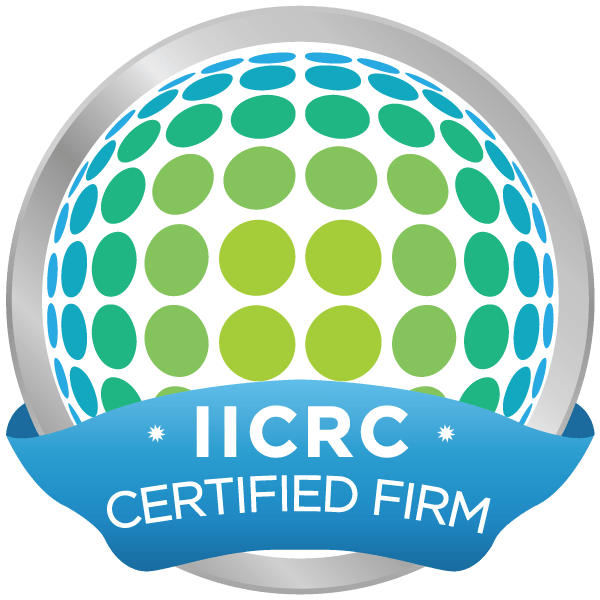Water damage can cause significant harm to your home or property if not addressed promptly. Understanding the water damage timeline is crucial to taking appropriate action and minimizing the impact of water damage. Knowing how long it takes for water to cause damage can make all the difference in mitigating the effects of water damage on your home.
Exposure to water can lead to irreversible damage to your property, as well as health hazards. If left untreated, water can seep into walls, floors, and furniture, causing significant structural damage over time. Mold growth and spread can contribute to a host of health issues, and the cost of repairs can quickly spiral out of control.
Key Takeaways
- Time is of the essence when it comes to water damage.
- Water damage can cause irreversible harm to your property and pose health risks.
- Acting swiftly to address water damage can minimize structural damage, prevent mold growth, and protect your health.
- Understanding the water damage timeline can help you take appropriate action and minimize the impact of water damage.
- Minimizing the impact of water damage can save you money and prevent long-term damage to your property.
Immediate Effects of Water Exposure
Whenever water comes into contact with your property, it sets in motion a series of immediate effects of water exposure. These consequences can manifest themselves quickly and lead to the potential for extensive damage within a short period. Understanding the risks associated with water exposure is crucial for taking swift and decisive action to minimize the impact of water damage.
| Immediate Consequence | Possible Damage |
|---|---|
| Discoloration and Staining | Water can cause discoloration, warping, and staining of walls, ceilings, and floors. |
| Swelling and Warping | When exposed to water, wooden surfaces like floors, doors, and trim can swell up and warp, leading to cracks and gaps. |
| Saturation and Absorption | Furniture, carpets, and other materials absorb water, leading to mold, mildew, and unpleasant odors. |
These are just some of the immediate effects of water exposure. If left unaddressed, these conditions can worsen quickly, leading to more substantial damage, including structural damage and the potential for mold growth. In the next section, we will explore the timeline for such damage to occur within the first 24 hours.
Within 24 Hours: Structural Damage Begins
When water damage occurs, it’s crucial to address it immediately because within the first 24 hours, the risk of structural damage significantly increases. The longer you wait to take action, the more severe the damage can be.
The factors that contribute to structural damage within 24 hours include the type of water that caused the damage, the amount of water, and the materials that were affected. For example, clean water may not cause as much damage as dirty water, and porous materials such as drywall and wood can absorb more moisture and may require replacement.
The consequences of structural damage can be costly, time-consuming, and potentially dangerous. Cracks in the foundation, warped floors, and weakened support beams can compromise the safety and stability of your property. Don’t risk it.
Take action within the first 24 hours of water exposure to minimize the risk of structural damage. Call a professional restoration company to assess the damage and properly dry and restore affected areas. Remember – time is of the essence.
Within 48 Hours: Mold Growth and Spread
If water damage in your property is not addressed within 48 hours, you face the risk of mold growth and spread. Mold thrives in damp and humid environments, and a water-damaged property provides the ideal conditions for it to grow rapidly.
Mold can cause significant damage to your property and pose serious health risks to you and your family. Exposure to mold spores can cause allergic reactions, respiratory problems, and other health issues, particularly in individuals with weakened immune systems.
The most common types of mold that grow in water-damaged properties include Cladosporium, Penicillium, and Aspergillus. These types of mold can cause a range of health problems, from minor allergic reactions to severe respiratory issues.
Preventing mold growth and spread is crucial to protecting your property and health. Addressing water damage within 48 hours, ensuring the affected areas are dried properly, and ventilating the area can help prevent mold growth.
In addition to these preventative measures, it is essential to address any visible mold growth promptly. Professional mold remediation services can help to remove existing mold and prevent future growth, protecting your property and health in the long run.
Don’t let water damage go unchecked. Take swift action within 48 hours, and prioritize preventing mold growth and spread for the safety of your property and health.
After 72 Hours: Severe Damage and Health Risks
When water damage is left unaddressed for more than 72 hours, the consequences can become severe. Prolonged water exposure can lead to significant structural damage to your property that may require costly repairs. Apart from the physical damage to your property, extended water exposure can pose a risk to your health.
One of the main health risks associated with extended water exposure is the growth of mold, which can lead to respiratory problems, allergies, and other health issues. Furthermore, water damage can create a breeding ground for harmful bacteria and viruses to thrive, posing a risk to you and your family’s well-being.
To mitigate the risks of severe damage and health risks, it is essential to take swift action and address water damage as soon as possible. Contacting a professional restoration company within the first 48 hours can significantly minimize the damage and mitigate the potential health risks.
Don’t hesitate to seek professional help to assess and restore your property after water damage. Your prompt action can make a significant difference in preventing costly and potentially hazardous damages.
Long-Term Effects: Secondary Damage and Costly Repairs
Water damage can wreak havoc on your property not only immediately, but also in the long-term. Failure to address the issue promptly can result in secondary damage that can be extremely costly to repair.
The secondary damage caused by water damage can range from weakened structural integrity to mold growth and various health risks. The problem is that the damage is not always noticeable immediately, and it can develop over time.
For instance, prolonged exposure to moisture can lead to wood rot and the growth of bacteria and viruses that can pose significant health risks. Additionally, the resulting dampness can cause the growth of mold, which can result in respiratory problems and other severe health issues.
| Secondary Damage | Costly Repairs |
|---|---|
| Weakened or compromised structural integrity | Replacing or repairing damaged floors, walls, and roofing |
| Mold growth and spread | Mold remediation and restoration |
| Electrical system damage | Rewiring and restoring |
As you can see, the secondary damage caused by water damage can be significant, resulting in costly repairs that can add up quickly. This is why it is essential to address water damage promptly and thoroughly to minimize its impact on your property and your wallet.
Conclusion
In conclusion, understanding the water damage timeline is crucial for effectively mitigating the impact of water exposure on your property. By familiarizing yourself with the immediate effects of water exposure and the timeline of structural damage, mold growth, and health risks, you can take appropriate action to minimize the impact of water damage.
Remember, time is of the essence when it comes to water damage. Acting swiftly to address water damage can minimize structural damage, prevent mold growth, and protect your health. Delaying action can result in severe damage, costly repairs, and potential health risks.
If you do experience water damage, make sure to call a professional restoration company as soon as possible. They will have the expertise and equipment needed to quickly and effectively restore your property and minimize further damage.
Thank you for taking the time to learn about the critical water damage timeline and its potential consequences. By staying informed and acting swiftly, you can protect your property and your health in the event of water damage.
FAQ
How long does it take for water to cause damage?
The timeline for water damage depends on various factors such as the source of water, the amount of water, and the materials involved. However, in general, water can start causing damage within a matter of hours.
How can I minimize the impact of water damage?
To minimize the impact of water damage, it is essential to take immediate action. This includes stopping the source of water if possible, drying out the affected area, and contacting professionals for water damage restoration services.
What are the immediate effects of water exposure?
When your property is exposed to water, it can lead to immediate consequences such as wet and damaged materials, discoloration, and potential electrical hazards. Immediate action is necessary to prevent further damage.
When does structural damage begin after water exposure?
Structural damage can begin to occur within 24 hours of water exposure. Moisture can weaken building materials, compromising the integrity of your property. Prompt intervention is crucial to prevent further structural damage.
What are the risks of mold growth and spread within 48 hours?
If water damage is left unaddressed for 48 hours, it creates an ideal environment for mold growth and spread. Mold can cause various health issues and further damage to your property. Timely remediation is necessary to prevent mold infestation.
What are the severe damages and health risks after 72 hours of water damage?
After 72 hours, water damage can lead to severe structural damage and pose significant health risks. It can weaken foundations, cause mold-related illnesses, and damage belongings. Immediate action is crucial to mitigate these risks.
What are the long-term effects of water damage?
Water damage can have long-term effects, including secondary damage such as warped or weakened structures, peeling paint, and mold growth. Ignoring water damage can result in costly repairs and further deterioration of your property.








